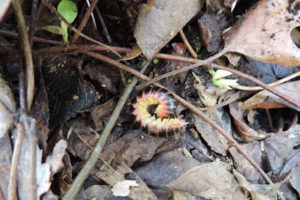City Nature Challenge 2018 Wrap-up
Published on May 08, 2018
A friendly global challenge was issued this year: Which cities could engage the most people to record the most observations of wildlife and plants, and find the most species over 4 days, April 27-30? There were 68 cities worldwide who answered the call. These cities tallied 441,888 observations by 17,329 people. Of these, 63 cities used iNaturalist resulting in 423,845 observations of 18,116 species by 16,544 people.
The free iNaturalist app is now the standard way for bioblitzes and other citizen science (the involvement of the general public in scientific research and data collection) projects to record information. The beauty of the app is that with a simple uploaded photo, crowd sourcing can then help identify the organism and the observation is recorded so that worldwide any researchers can data mine the info they need. You never know what piece of data you could be providing some researcher somewhere in the world. You don’t even need to know what you’re reporting (though the iNaturalist app has a neat suggested identification feature to provide likely ID possibilities) due to the crowd sourcing that allows other perhaps more knowledgeable people to provide their ID skills.
The DC Metro Area did very well indeed in this Global Event
Its 22,809 observations was fifth place overall, behind San Francisco which started the competition 3 years ago (41,737 observations), Dallas/Fort Worth (34,218 observations), San Diego (33,448 observations), and Klang Valley/Greater Kuala Lumpur (25,287 observations). Just behind DC were Houston followed by New York. Coming in last was Palmer Station Antarctica, which understandably only had 36 observations (but 27 species with only 3 people in Antarctica of all places!), just behind Buenos Aires (170 observations of 96 species with 18 people) and Salvador with 220 observations of 52 species using only 6 people. Globally 124 new species were added to the iNaturalist data base that had not been present before, with Hong Kong providing 57 of them.
>> Read more at the Capital Naturalist.

Two of the groups I led found cyanide producing Xystodesmid millipedes, Apheloria virginiensis